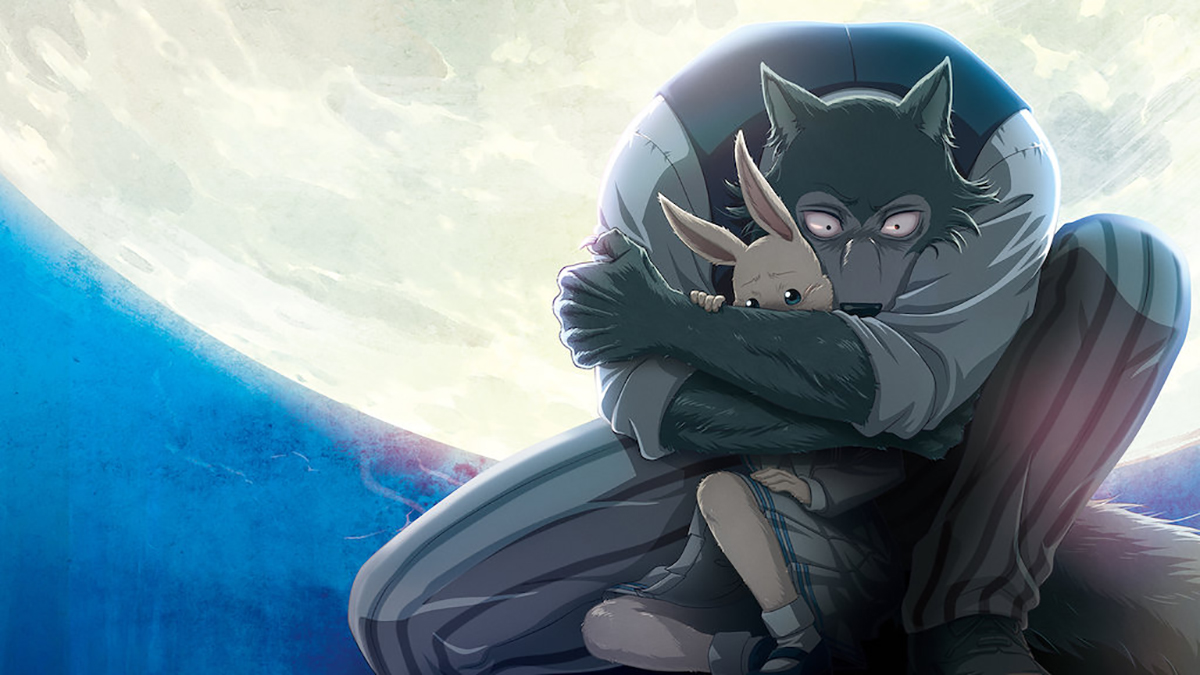Now that so many of us are cooped up indoors, it’s as good a time as any to catch up on some Netflix, and one new show on offer is Beastars.
If I had to explain Beastars as simply as possible, I would describe it as “Zootopia, but much darker.” This, of course, would be greatly oversimplifying, and Beastars has some aspects to it that set it apart from anything else I have encountered.
The story takes place in an otherwise modern world populated by sentient, humanoid, talking animals (or furries if you prefer); it’s much like Zootopia or Bojack Horseman, but in an anime style rather than 3D or 2D Western animation as in the former two respectively. Like Zootopia, this world is based on the premise of herbivores and carnivores living together in harmony. However, in Beastars, this supposed harmony comes at a much steeper price. Animal instincts are much stronger and are a challenge to overcome. Birds, reptiles, and possibly fish are sentient as well as mammals, so dietary options are more limited for carnivores. Worsening the situation is a spate of “devourings” (this universe’s term for cannibalistic murder of prey by predator) which has heightened mistrust and bigotry between species.
In this troubled milieu we follow the stories of Legoshi the grey wolf, Haru the dwarf rabbit, and Louis the red deer, all students at Cherryton High School. Each of them struggle with their animal instincts, their moral code, social pressures, and their feelings for one another, which often pull in contradictory directions. The main plot is kicked off when Legoshi has a moment of weakness and nearly devours Haru when they first meet. They later realize they have romantic feelings for each other, but are haunted by the possibility that Legoshi might succumb to his predatory instincts.
The exposition can be a bit clunky at times. They introduce a new character for the sole purpose of explaining why eggs are acceptable food but most other meats are not, and do not do anything with her afterwards. ***Bojack did a better job of seamlessly integrating its worldbuilding through showing over telling or through unobtrusive dialogue.
Characterization on the other hand is definitely one of the series’ strong points. The inner natures and experiences of the main characters are laid out gradually, making the audience keen to learn more, and shedding valuable insight on why the characters act the way they do. Over time, we really come to know them on a deep level.
I think the animation style deserves special mention as well. The art style is crisp, detailed, and very visually appealing, but what really stands out to me are the character movements. In most animation one tends to see either realistic movement, or else quick and exaggerated motions; in either case the movements are free and airy. In Beastars however, a lot of the motion seems fluid, yet heavy and lethargic, almost as if everyone is underwater. I do not recall seeing anything like it before, and I am still not sure how I feel about it. It bothered me at first, but I found that it grew on me.
Much like the animation, Beastars is a love-it-or-hate-it show. Aspects that are a draw to some may be off-putting to others. I think it greatly depends on one’s interests and preferences going into it.
Beastars is a complex and ambiguous show, and I do not think I can really do the series justice without explaining every aspect of it in detail. Even now I struggle to put my finger on “What it’s all about.” Though, if I had to hazard a guess, it is about learning to come to terms with one’s own irrational impulses. Perhaps it is best if you discover it for yourself and see what you make of it. Personally, I recommend giving it a try if this sounds interesting to you, but be warned that there are some disturbing themes and imagery.
Still, love it or hate it, Beastars has at least one thing going for it: that theme tune is really catchy. I can’t get it out of my head.


